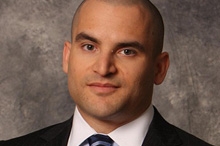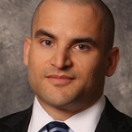
 Steve Birnbaum is being honored as a Champion of Change for the leadership he demonstrated in his involvement in response and recovery efforts following Hurricane Sandy.
Steve Birnbaum is being honored as a Champion of Change for the leadership he demonstrated in his involvement in response and recovery efforts following Hurricane Sandy.
The spirit of hard work and strong community in our great nation, especially after having worked in so many other developed and developing countries, never ceases to deeply inspire me. Beyond words, I am humbled to be honored as a White House Champion of Change.
The achievements in the response to Sandy were a team effort, and could not have occurred without the hard work of everyone on the FEMA Innovation Team. This honor belongs to the whole team, which was comprised of: Tristan Allen (NPS), Luke Beckman (G&H International Services), Willow Brugh (GWOB), John Crowley (Harvard Humanitarian Initiative), Ted Okada (FEMA), Desiree Matel-Anderson (FEMA), Tamara Palmer (FEMA), Eric Rasmussen (Access Agility), Frank Sanborn (HHS), Gerald Scott (NPS), and Galit Sorokin (DeepField).
In disaster response, information has typically been a tool for formal response agencies - used to make decisions on how to help people. We need to change this mindset. As we commit to FEMA's guiding principle of a Whole of Community response, information must be considered as a fundamental requirement for everyone. It permits survivors to control their own priorities, to reassure their loved ones, and to begin the process of helping themselves, and their communities. Information networks are enabling a fundamental power shift in disaster response from institutional responders to community-based ones.
I have been privileged to serve globally in the satellite telecommunications industry, and to serve locally as a volunteer first responder, in both wilderness rescue and in urban fire departments. After the Haiti earthquake, I came to realize that satellite terminals were already out in our communities. In the United States, even most corner gas stations and big box stores have their own satellite dishes. What if we could tap into that self-sufficiency? What if the hundreds of thousands of satellite terminals around the world could be "re-purposed" into a "pre-deployed" capability for disaster response? I launched the GVF Disaster Preparedness Registry to do just that. GVF Registry members include some of the world's largest satellite operators and service providers. With their participation, the message has been getting out, and more companies are stepping up. What speaks to Whole of Community better than using a community's own resilient networks to help it communicate after a disaster?
When Hurricane Sandy first made landfall, I was helping to staff my local Rockville, Maryland firehouse, and serving my local community. As it passed, and the devastation to Northeast communications networks became clear, I transitioned to the role of a disaster technologist and was asked to join the just-created FEMA Innovation Team. The Innovation Team is a multi-sector, cross functional group composed of governments, non-profits, international organizations, volunteers, businesses, and citizens: a true whole community. Often, industry representatives are labeled as "vendors", which imposes certain connotations and creates an unnecessary separation. Instead, we worked as a unified, focused team, each bringing to the table its own unique experience, expertise, and capabilities. Our mandate was simple: find the communities most impacted by the storm, determine their biggest needs and challenges, and then develop solutions to assist and to improve their recovery.
Not all communities are the same. This sounds simple, but it has a deeper meaning. Each community reacts and responds in its own manner. A community with a strong outside support network that is well organized internally can take charge of its own recovery as long as it can communicate. This frees up resources to help those who may need them more. Some communities don’t trust outsiders, including local responders or FEMA. Empowering their community leaders can lead to a better understanding of the needs.
Coincidentally, Hurricane Sandy struck as some significant developments were emerging within the satellite industry. An entire new generation of satellites was being launched, offering a leap forward in bandwidth cost and transmission speed, with even smaller and more economical terminals. Fortunately, two of these new systems, known as High Throughput Satellites, cover the United States. This ushers in a new era of low-cost, high-speed satellite communications that can make a significant impact for both official and community-based disaster response organizations.
As mobile Internet connectivity gains acceptance within the emergency management and disaster response community, many mistakenly assume that the data communications tools must be big, expensive, and complicated. Not necessarily. Sometimes, we fall victim to requesting a particular tool, rather than actually the capability needed. For example, frequently we saw requests for mobile cell towers, known as a Cell on Wheel (COW), to a mobile operator simply because this is the tool often associated with making a phone call or connecting to the Internet. When we instead articulate the actual need instead of just the tool with which we are familiar, it opens the door to innovate with new solutions. For example, if the need is to place a phone call, we can do that with a VoIP phone or a Skype client on a laptop or wireless device. We do not need to constrain ourselves to thinking that only a commercial wireless carrier can give us the ability to make a call. There are many tools that a community itself can invest in as part of its resiliency planning. We worked closely with FEMA, non-profits and local community groups. Some of our information & communications achievements included:
Developing, in under 24 hours, a new solution to provide communications tools equivalent to FEMA’s Mobile Communications Operations Vehicles (MCOVs), yet could fit in the trunk of a car. They allowed FEMA to scale up and support a much greater number of Disaster Recovery Centers, and to re-deploy its MCOVs to areas of even greater need.
Created and deployed a high-speed satellite-based Internet and phone system to community groups in the Rockaways and the Red Hook neighborhoods who were establishing their own community recovery centers to provide local aid distribution and coordinating volunteers. With these solutions in place, they could begin to attend to their own needs - often more effectively than outside government agencies could.
With a basic network established, we worked with the Red Hook Initiative and Project Byzantium to deploy Wi-Fi throughout their neighborhood. FEMA Corps volunteers then went door-to-door with Internet-connected tablets to visit survivors, instead of survivors having to come to FEMA’s locations. This is now a model that is changing how FEMA supports communities.
This innovation did not end after Sandy. I realized that the lack of information about wireless network coverage impeded both formal and informal community groups alike. I am currently leading an effort to bring together business, government, and academia to address this. We are creating a collaborative public/private effort involving an international corporate partner, the FCC, DHS S&T, and FEMA Think Tank as well as the Naval Postgraduate School's Camp Roberts RELIEF program. Instead of relying on reports from carriers, a significant challenge in a disaster, we are working on solutions that would utilize crowd-sourced, distributed sensors on mobile phones to "paint a picture" of network coverage on what is known as a heat map. This information will be made available with an open data policy. We look forward to seeing the public's creativity come alive as they also innovate and conceive applications for this data, that we have not even imagined. Our Team is also working closely with FEMA to support its efforts to create a better experience for the survivor of a disaster, including more community integration, and the empowerment of a community's own recovery efforts. We welcome input from the public, and encourage participation through the FEMA Think Tank.
In a disaster, we must remain focused on the survivors, and respond to their needs. Solutions created must be tied to the needs of the community or to decisions that need to be made. Think of the families around the country unable to reach loved ones in New York after the storm to make sure they were safe, or the community leaders in the Rockaways who attempted to get the message out to tell the world of their needs. Consider the volunteer firefighters in Breezy Point who fought a 6-alarm fire raging through their community while standing in chest-deep water, then remained at their firehouse for days to make sure their community was still protected. In today's hyper-connected world, the ability to communicate and access information stands as a key foundation of a Whole of Community response.
Our Innovation Team's goal was to create and inspire new ideas that can be adopted by others. We proved that innovation in the midst of a disaster remains not only possible, but can be extraordinarily successful - with the right support from leadership, partners, and the community. We are but a small team; so for our ideas to make a difference, we need the help of everyone - to help our neighbors, help themselves.
Steve Birnbaum is the Chair of the Global VSAT Forum’s Humanitarian Assistance and Disaster Response Programs and an inaugural member of the FEMA Innovation Team.


